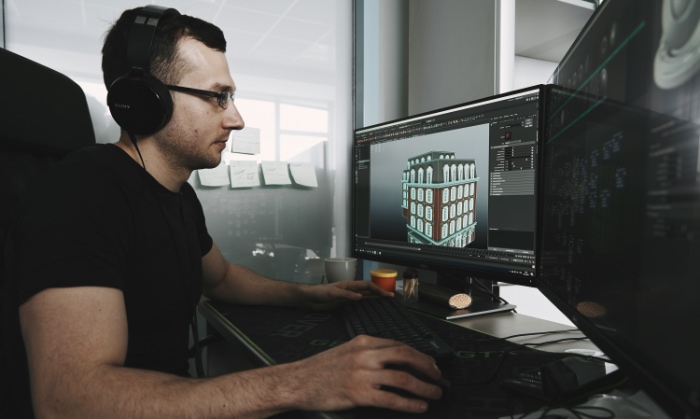2D vs. 3D Animation: A Creator’s Guide to Choosing Your Path

Animation has evolved dramatically from the early days of hand-drawn sketches to the complex, computer-generated imagery we see in today’s movies and video games. This journey from 2D to 3D animation marks a significant shift in how creators bring stories and characters to life.
Yet, as technology advances, a debate emerges among artists and enthusiasts alike: Is 3D animation truly easier than its 2D predecessor, or does this modern technique bring its own set of challenges?
Technical Complexity
The realm of animation is a fascinating intersection of art and technology, where the tools and techniques used can significantly influence the creative process. As we dive into the technical complexity of 2D and 3D animation, it’s crucial to understand that each style possesses its unique set of challenges and requirements.
2D Animation Challenges
2D animation, known for its rich history and traditional techniques, demands a high level of artistic skill and creativity. Animators must have the ability to draw consistently and expressively, as they create individual frames that bring characters and scenes to life.
Each movement requires careful planning and execution, with attention to detail critical in ensuring the fluidity of motion. Additionally, 2D animators often face the challenge of maintaining character integrity across frames, a task that requires a deep understanding of anatomy, perspective, and motion dynamics.
Despite advancements in digital tools that streamline some processes, the essence of 2D animation remains deeply rooted in its artistic demands.
3D Animation Software and Tools
On the flip side, 3D animation introduces a different set of complexities, primarily through its reliance on sophisticated software and technology. Learning to navigate these tools is the first hurdle for many aspiring 3D animators.
Software like Maya, Blender, or Cinema 4D offers powerful capabilities for modeling, rigging, texturing, and animating in a three-dimensional space. However, mastering these applications requires time and dedication, with a steep learning curve for those new to the field.
Beyond the basics, 3D animators must also understand the principles of lighting, camera angles, and rendering, each adding layers of complexity to the production process. The technical nature of 3D animation often means that animators spend significant time troubleshooting and fine-tuning scenes to achieve the desired outcome, blending technical proficiency with creative vision.
Creativity and Artistic Control
Exploring the realms of 2D and 3D animation unveils a fascinating dynamic between creativity and artistic control. Each medium offers distinct avenues for expression, shaping how stories and characters come to life on screen.
Artistic Expression in 2D Animation
2D animation holds a special place in the heart of the animation world, celebrated for its direct line to the animator’s creative vision. This medium allows artists to infuse each frame with personal flair and stylistic choices, making it deeply expressive.
The hand-drawn nature of 2D animation offers unparalleled control over the characters’ movements and emotions, enabling animators to convey subtle nuances and complex expressions with a stroke of the pen. This level of artistic control fosters a unique connection between the animator and their creations, as every aspect of the animation reflects their personal touch.
The freedom to manipulate lines, shapes, and colors directly contributes to the distinctive look and feel of 2D animated works, making them timeless pieces of art.
Creative Possibilities in 3D Animation
Transitioning to the sphere of 3D animation, the landscape of creativity and artistic control takes on a different form. While 3D animation is often perceived as more technical due to its reliance on software, it also opens up a vast array of creative possibilities.
The three-dimensional space allows for intricate detailing, realistic textures, and dynamic camera movements that can bring a level of depth and realism unattainable in 2D environments. Animators have the freedom to create complex worlds and characters that can interact with their surroundings in lifelike ways.
Moreover, the use of rigging systems in 3D animation provides a foundation for characters that can be manipulated with precision, giving animators control over subtle movements and expressions. This blend of technical prowess and creative exploration enables 3D animators to push the boundaries of storytelling and visual effects.
Time and Resource Considerations
When venturing into an animation project, understanding the implications of time and resources is crucial. Both 2D and 3D animation have distinct requirements that can significantly impact the scope and duration of a project.
Production Time for 2D Animation
2D animation is renowned for its traditional charm and artistic depth, but these qualities come with their own set of time and resource demands. The process of creating 2D animations involves drawing each frame by hand, a labor-intensive method that requires a significant amount of time, especially for animations that aspire to fluidity and detail.
Moreover, the need for consistency across frames to maintain character integrity adds another layer of complexity, increasing the time investment. While digital tools and software have streamlined some aspects of 2D animation, making it easier to replicate frames and apply effects, the essence of this art form remains rooted in manual craftsmanship.
As a result, the production timeline for 2D animations can vary widely, influenced by the complexity of the scenes, the level of detail, and the specific techniques employed.
Efficiency in 3D Animation
In contrast, 3D animation is often perceived as more efficient once the initial models are created. The use of 3D models allows for easier manipulation and re-use across scenes, saving time in the animation process.
Rigging, which involves creating a skeletal structure for models, enables animators to automate movements, making it possible to produce complex sequences more quickly than in 2D animation. Additionally, modern 3D animation software includes features that streamline tasks such as lighting, texturing, and rendering, further enhancing efficiency.
However, it’s important to note that the upfront time investment in designing and modeling 3D characters and environments can be substantial. The complexity of these initial stages, coupled with the need for specialized skills to navigate 3D software, means that the time saved during the animation phase must be balanced against the resources required to start a 3D project.
Skill Sets and Learning Curves

The journey into animation, whether through the path of 2D or 3D, involves mastering a distinct set of skills and navigating learning curves unique to each medium. Aspiring animators must equip themselves with both the artistic and technical proficiencies required to bring their creative visions to life.
Learning 2D Animation
2D animation requires a strong foundation in drawing and an understanding of fundamental animation principles such as timing, spacing, and squash and stretch. Animators must develop the ability to convey movement and emotion through a series of static images, a skill that demands patience, precision, and a keen eye for detail.
The traditional hand-drawn approach necessitates proficiency in drawing techniques, character design, and storyboarding, along with a deep appreciation for the fluidity and expressiveness that define this art form. With the integration of digital tools like Adobe Animate and Toon Boom, 2D animators also need to adapt to software that can enhance their workflows but also introduce new learning curves.
Despite these challenges, the rewards of 2D animation lie in the direct connection between the artist’s hand and the final animated work, offering a deeply personal and expressive medium for storytelling.
Mastering 3D Animation
Entering the realm of 3D animation involves a significant shift, as it requires a blend of artistic sensibility and technical acumen. The initial stages of 3D animation include modeling, where animators create the geometry of characters and environments, followed by texturing and rigging, which give these models color, surface detail, and movement capabilities.
Learning to effectively use 3D animation software, such as Maya, Blender, or 3ds Max, is critical, as these programs are complex and feature-rich, covering everything from animation and lighting to rendering and special effects. Additionally, understanding concepts like camera angles, lighting techniques, and the physics of motion in a three-dimensional space are crucial for producing realistic and engaging animations.
The learning curve for 3D animation can be steep due to the technical complexities involved, but it also opens up a vast landscape of creative possibilities that go beyond the limitations of two dimensions.
Personal and Project-Specific Considerations
Choosing between 2D and 3D animation for a project is not just about weighing the technical aspects and potential outcomes. It also involves personal preferences and the specific requirements of the project itself.
Choosing Based on Project Needs
Every animation project has its unique set of objectives and constraints. 2D animation, with its classic appeal and expressive versatility, might be the perfect fit for projects aiming for a stylized, artistic look or those with narrative elements that benefit from the traditional charm of hand-drawn frames.
It’s particularly effective in storytelling where the emotional connection and character expressiveness are paramount. On the other hand, 3D animation offers depth, realism, and the ability to explore complex visual effects and environments. It’s ideal for projects requiring intricate details, realistic textures, or dynamic camera
movements that immerse the viewer in a three-dimensional space. The decision should be guided by the nature of the project, considering factors like the intended audience, the message or story being conveyed, and the overall visual style that best serves the project’s goals.
Individual Preferences and Skills
An animator’s personal inclination and skill set play a significant role in choosing between 2D and 3D animation. Those with a strong background in drawing and a passion for traditional animation techniques may naturally gravitate towards 2D animation.
This medium allows them to leverage their skills in drawing and storytelling in a direct and impactful way. Conversely, individuals fascinated by technology, who enjoy problem-solving and working with software, may find 3D animation more appealing.
The choice might also reflect an individual’s desire to challenge themselves and learn new skills, whether that means diving into the complexities of 3D modeling and animation or mastering the art of hand-drawn character and scene creation in 2D.
Conclusion
Navigating the realms of 2D and 3D animation requires a deep dive into the intricacies of each medium, highlighting the unique opportunities and challenges they present to creators. From exploring the technical demands and creative freedoms to assessing time, resources, and skill sets, this exploration provides insights into what makes each animation style distinct and valuable.
Whether opting for the traditional artistry of 2D or the dynamic realism of 3D, the decision should be guided by the project’s specific needs, the animator’s skill level, and the desired narrative impact. Understanding these factors enables creators to select the most suitable medium, ensuring that their animation not only captivates audiences but also aligns with their vision and objectives.
Through this thoughtful approach, the true potential of animation is unlocked, allowing stories to unfold in ways that enchant and engage viewers across the globe.


